Winter’s snowy landscapes may look magical, but they can pose real threats to evergreen shrubs. These plants are prized for their year-round beauty, offering lush greenery even when the rest of the garden lies dormant. However, heavy snow, ice, and freezing winds can leave branches broken, foliage scorched, and shrubs permanently disfigured.
If you want your evergreen shrubs to stay healthy and vibrant through winter and bounce back beautifully in spring, you’ll need a proactive approach to protecting them. This article explains in detail why snow damage happens, how to prevent it, and the best long-term strategies to keep your evergreens safe.
Why Evergreen Shrubs Are Vulnerable in Winter

Unlike deciduous plants, which shed their leaves to conserve energy, evergreens hold onto theirs all year long. This characteristic makes them more exposed during harsh winters. Here’s why:
- Snow Load Stress
Heavy, wet snow can accumulate on branches, bending them downward or snapping them entirely. Shrubs with upright, narrow branches are particularly vulnerable. - Ice Damage
Ice storms coat branches in solid weight, often leading to breakage. Unlike fluffy snow, ice doesn’t easily shake off. - Winter Burn (Desiccation)
Even though the ground is frozen, evergreens continue to lose water through their leaves. With limited water uptake from frozen soil, foliage dries out and turns brown, especially on the windward side. - Temperature Fluctuations
A sudden warm-up followed by a hard freeze can crack bark or damage tissues, weakening shrubs. - Animal Damage
Deer, rabbits, and rodents often chew bark or foliage when food sources are scarce in winter.
Understanding these risks helps you target the right protection strategies.
Step 1: Choose the Right Location and Shrubs
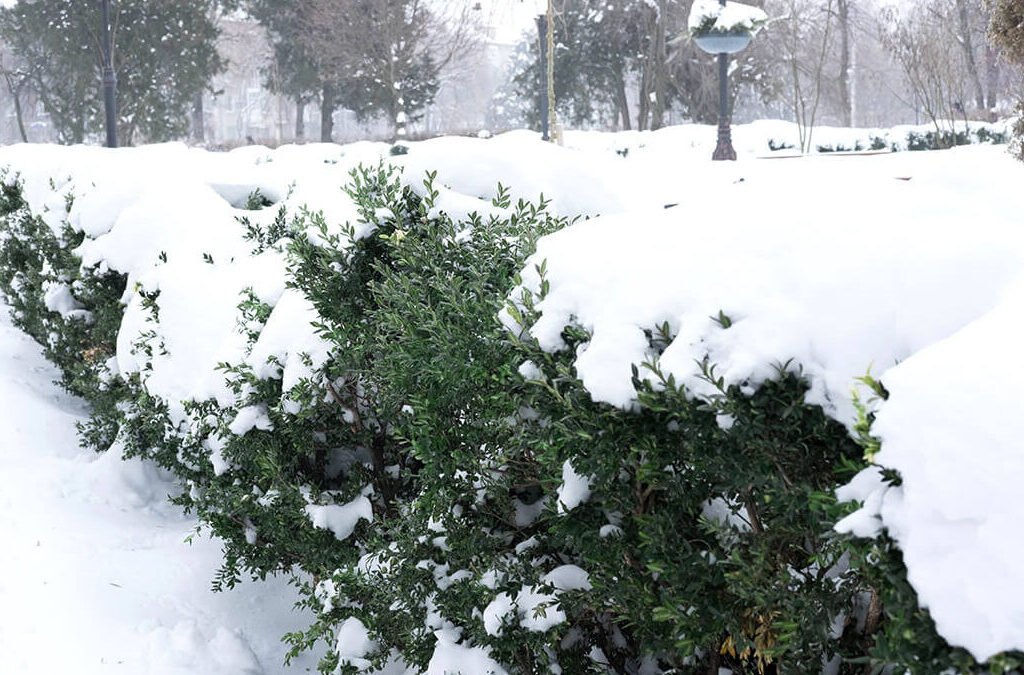
The best protection starts before planting. If you’re still in the planning stage of your garden, consider:
- Sheltered Planting Sites: Place evergreens away from areas with direct exposure to winter winds.
- Spacing: Avoid planting too close to driveways or walkways, where shoveled snow and road salt can damage shrubs.
- Shrub Selection: Some evergreens are naturally more resistant to snow and cold, such as boxwood, yew, and arborvitae.
Step 2: Prune for Strength Before Winter
Pruning evergreen shrubs in late fall is one of the most effective ways to reduce snow damage:
- Remove Weak Branches: Cut away any dead, diseased, or thin branches that won’t withstand heavy snow.
- Shape the Plant: Trim shrubs into a rounded or pyramidal shape, which naturally sheds snow better than flat-topped forms.
- Thin Dense Growth: A little thinning improves airflow and makes it harder for snow to pile up inside the shrub.
Pro tip: Always use sharp, sterilized pruners to prevent spreading disease.
Step 3: Provide Physical Protection
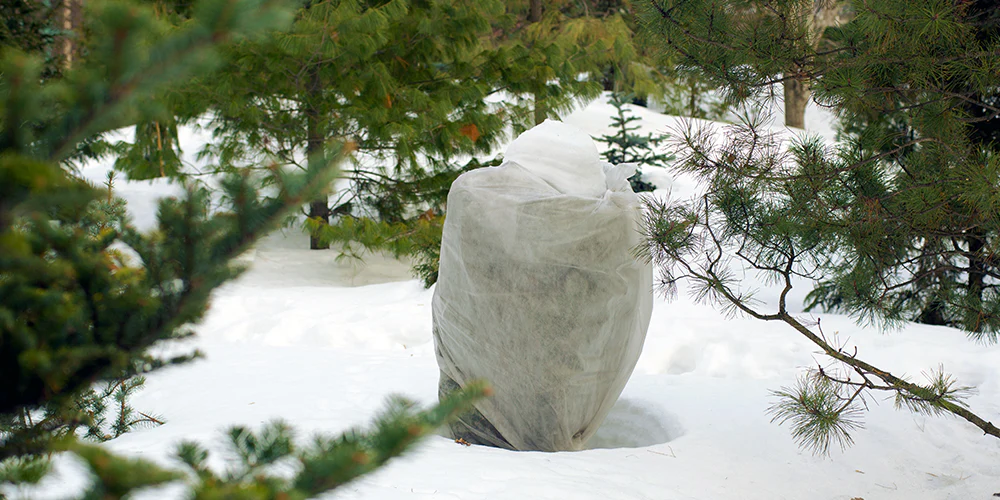
When snow and ice threaten, sometimes the best defense is a physical barrier. Here are some tried-and-true methods:
- Burlap Wrapping
- Drive stakes around the shrub and wrap burlap loosely around the stakes, not directly against the foliage.
- This shields shrubs from wind, sunscald, and snow while still allowing airflow.
- Snow Fencing
- Erect temporary fencing a few feet upwind of shrubs to divert drifting snow.
- Particularly useful for protecting long hedgerows.
- Tying or Binding
- Gently tie branches of columnar shrubs like arborvitae together with soft twine or plant tape.
- This prevents branches from splaying under heavy snow.
- Conical Covers
- Use ready-made shrub covers (like breathable fabric cones) for small plants.
- Never use plastic, as it traps heat and moisture, causing fungal issues.
Step 4: Mulching and Soil Care
Healthy roots mean resilient shrubs. Before the ground freezes:
- Apply Mulch: Spread 2–4 inches of organic mulch (shredded bark, pine needles, or compost) around the base of shrubs.
- Avoid Piling Against Trunks: Keep mulch a few inches away from stems to prevent rot.
- Insulate Roots: Mulch helps regulate soil temperature, reducing freeze-thaw cycles that can heave roots out of the ground.
Step 5: Watering Before Winter
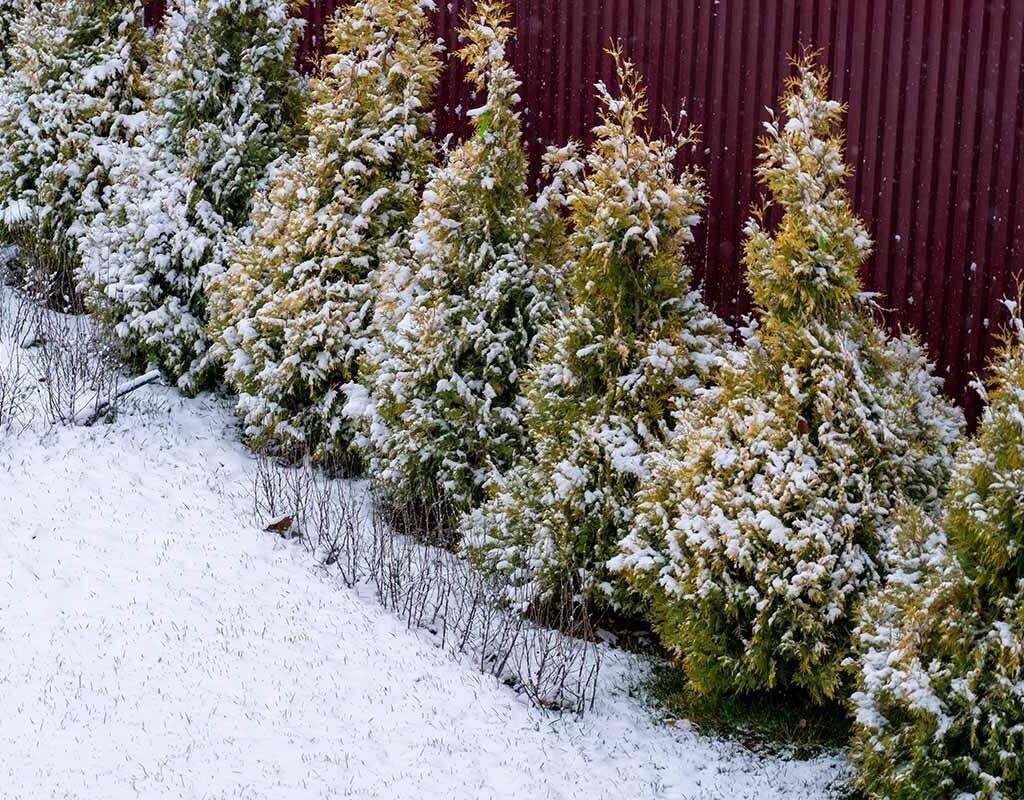
Evergreens need moisture reserves to survive winter drought stress:
- Deep Watering in Fall: Give shrubs a thorough soak before the ground freezes.
- Focus on Young Plants: Recently planted shrubs are especially vulnerable to dehydration.
If your winters are dry but not frozen solid, water occasionally during warm spells.
Step 6: Snow Management
Snow itself isn’t always the enemy. In fact, a light snow blanket can insulate plants. The danger comes from heavy buildup:
- Gently Remove Snow: Use a broom to lightly brush off snow, sweeping upward rather than downward.
- Avoid Shaking Vigorously: This can snap brittle branches.
- Never Remove Ice: Trying to chip or break off ice almost always causes worse damage than leaving it.
Step 7: Protect Against Animals
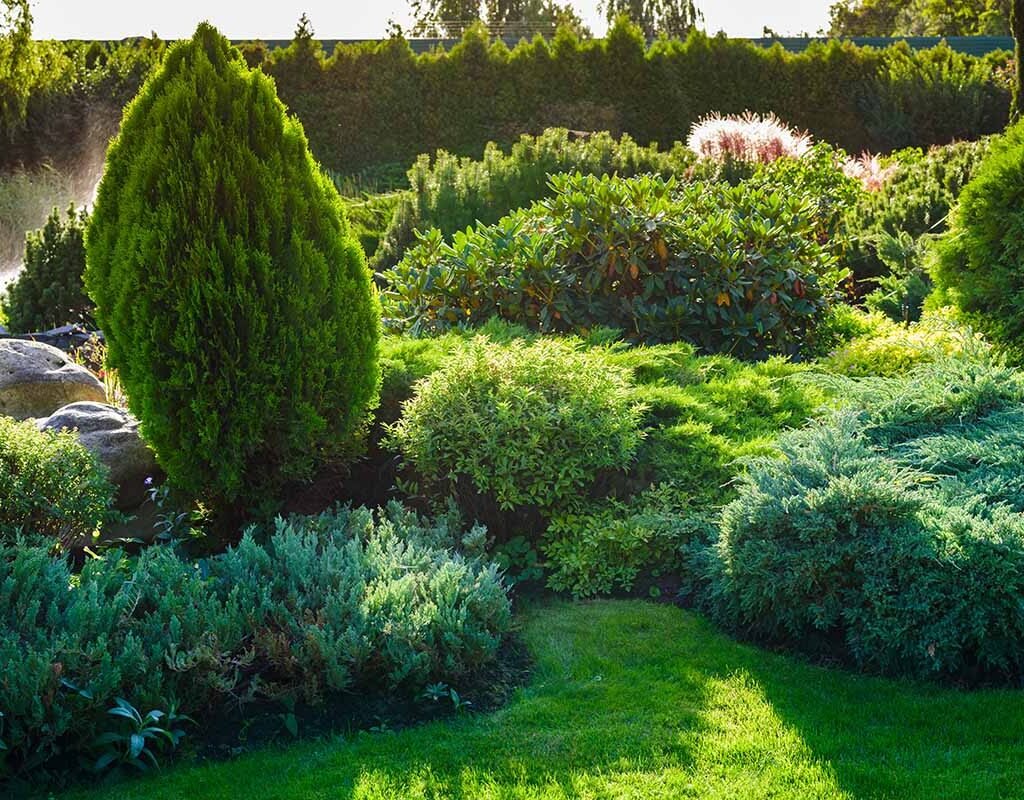
Hungry wildlife can undo all your winter efforts. To keep them away:
- Fencing: A simple wire mesh fence around vulnerable shrubs works well.
- Repellents: Spray commercial repellents or homemade mixtures (like garlic or hot pepper spray) to deter browsing.
- Physical Barriers: For young shrubs, tree guards or trunk wraps can protect against gnawing rodents.
Step 8: Spring Recovery and Care
Even with the best precautions, some damage may occur. Here’s how to help shrubs bounce back:
- Prune Broken Branches: Cut cleanly just above a healthy bud or branch junction.
- Fertilize Lightly: In early spring, apply a balanced slow-release fertilizer to encourage new growth.
- Water Well: Resume deep watering as soon as the soil thaws.
- Be Patient: Many evergreens recover gradually—give them a full season to show signs of regrowth.
Long-Term Strategies for Resilient Evergreens
- Right Plant, Right Place: Always choose species suited to your climate.
- Regular Maintenance: Annual pruning, mulching, and watering make shrubs stronger each year.
- Landscape Design: Incorporate windbreaks, such as fences or taller trees, to shield shrubs from direct winter exposure.
Final Thoughts
Protecting evergreen shrubs from snow damage is about more than just preserving their appearance—it safeguards the health of your entire landscape. By combining smart planting choices, seasonal maintenance, and practical winter protections, you can ensure your evergreens remain lush and beautiful for years to come.
Instead of dreading the winter’s toll on your garden, take proactive steps this fall. When spring arrives, your shrubs will reward you with strong growth, fresh color, and the satisfaction of a garden that survived the snow unscathed.
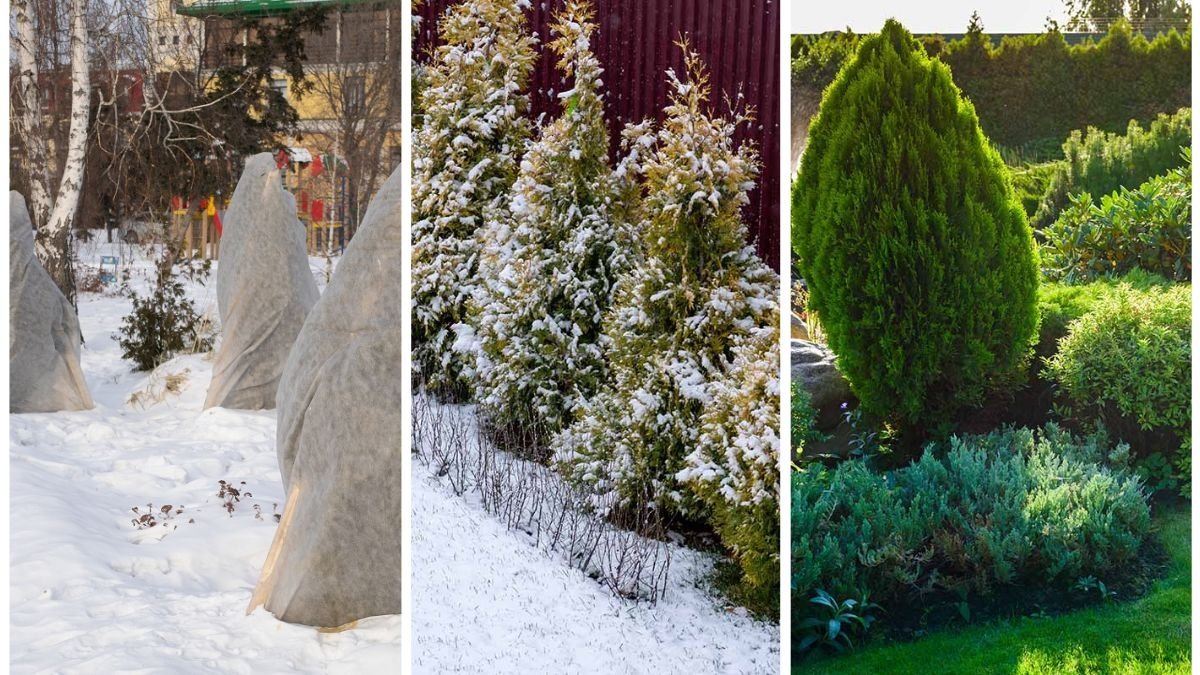
Leave A Comment